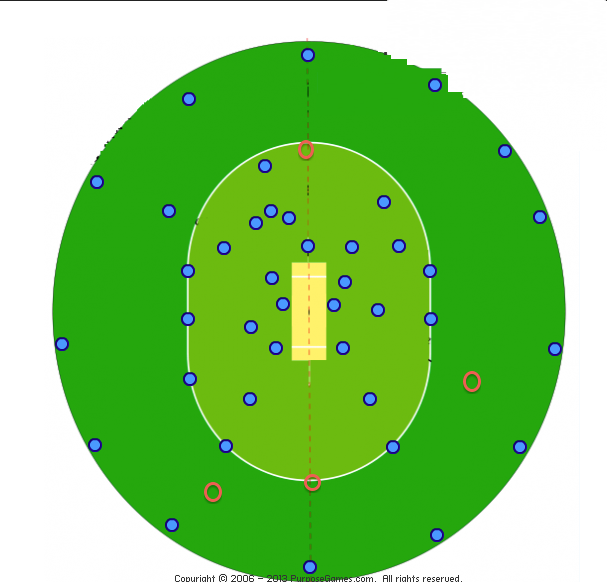1) This position is called deep mid on and is a perfectly legitimate position usually used when the batsmen is chipping over mid on but not trying to carry all the way for six.
2) Another perfectly legitimate position, this is called short stop (as opposed to the man on the fence, long stop), and is often seen in village cricket when a low quality wicket keeper is standing up to the spinner.
3) This is actually an illegal position as it is obstructing the batsmens sight line behind the bowlers arm, and he is perfectly at liberty to ask the opposition captain to move him to one side. The straight man on the fence you have drawn is similarly in an illegal position.
4) Where you have drawn the circle would probably be described as 'cow corner but twenty yards in', and used when a guy is slogging but not strong enough to clear the field.
Basically fielders can be placed anywhere except on the wicket, straight behind the bowlers arm, and no more than 2 behind square on leg. Ive seen a field of 3 slips, gully, third man, midwicket, forward cow corner, cow corner and backward cow corner set to a batsmen - the batsmen first drilled the ball over the three cow fielders for six, second ball swing and miss, third ball hit it straight to one of the cow fielders. If the batsmen had limited strokes the fielding captain is perfectly at liberty to put all his fielders where he knows the batsmen will hit it.

